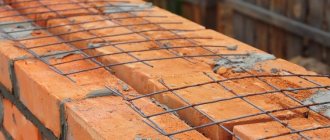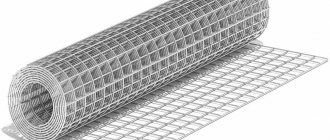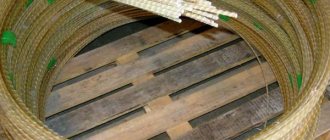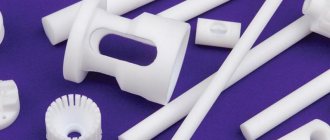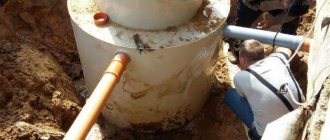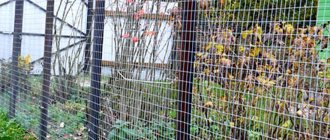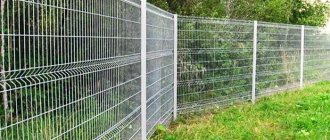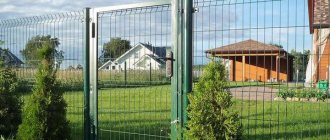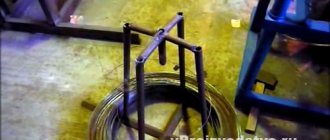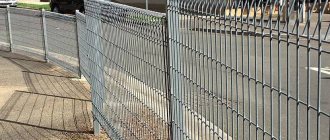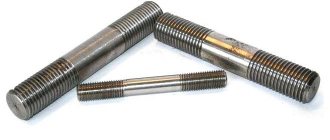- Metal grid
August 31, 2019
661
Do your house have strong walls? This question can only be answered confidently by someone who used high-quality and correctly selected reinforcing material when constructing a home. To strengthen the structure, as a rule, masonry metal mesh is used, the use of which solves most construction problems.
Today the construction market offers analogues of metal mesh. However, it is difficult for an inexperienced person in construction to understand this diversity, evaluate the advantages of this or that material, and choose the best option. For many years, metal has been the undisputed leader in production. Although the development of the construction industry requires modern and technological solutions. Which will allow you to reduce the project cost without losing the strength of the structure.
As a result, new types of masonry mesh appear, the use of which we will discuss in the article. We will also help you understand what types of meshes are popular today and what their advantages are. Let's consider the main points of the correct use of grids. You will learn the opinion of experts regarding the choice of reinforcing material for the construction of walls, floor screed, pouring the foundation and other tasks.
Application of masonry mesh and what function it performs
Masonry mesh, its use is intended to increase the strength characteristics of the structure and the service life of the object. That is why it is one of the popular and sought-after materials on the construction market.
Main grid functions:
- reinforcement of the screed of the self-leveling floor and the plaster layer of the walls to prevent the formation of cracks during the operation of the premises;
- increasing the load-bearing capacity of walls and partitions by up to 30% by horizontally reinforcing masonry from any type of brick and building blocks;
- reinforcement of the foundation of a house or fence, in this way you can increase the resistance of the concrete base to compression and tension, prevent its shrinkage and deformation;
- connection of the main layer of masonry with the facing layer, the mesh securely holds the layers of the wall;
- reinforcement of concrete products to increase wear resistance;
- savings on mortar, since the mesh prevents it from falling into the voids of the facing hollow brick;
- reinforcement of a road surface or parking lot to create a smooth and high-strength surface that is resistant to subsidence and cracking.
You need to understand that no matter how high-quality brick, block and concrete are used in construction, they will eventually deform and crack during the shrinkage of the walls. As a result, the load-bearing capacity of the object decreases and its service life is significantly reduced. And such a house will no longer be able to store heat.
With the right masonry mesh you can prevent these problems. And you will be able to build a reliable structure that will serve as a family home for many generations.
Why standardize masonry mesh according to GOST
The descriptions and requirements contained in the state standard determine the quality and, as a consequence, the methods of use of certain products. Such standardization is preceded by multiple theoretical calculations and practical tests, which guarantee, in the recommended application, safety and expected functionality.
For example, GOST 23279-85 for welded steel mesh contains information on the weight (for a certain wire cross-section) of one meter of square material. Exceeding this parameter for a specific mesh may indicate a discrepancy in consumer qualities, namely:
The metal of the wire does not correspond to that required by GOST.
As a consequence of p.p. 1, the strength characteristics may be worse.
Greater weight may completely exclude the possibility of its use, for example, for walls made of foam concrete.
The lack of chemical inertness required for the conditions of use in construction can also exclude the use of mesh.
Thus, non-compliance of even one of the parameters of the mesh for reinforcement with GOST may make it inapplicable for its functional purpose.
Types of masonry mesh that are available on the construction market in 2021
Today, two types of masonry mesh are available on the construction market: metal and composite. Metal masonry mesh can be divided into 2 subspecies. Depending on the material used: aluminum and steel. To protect against exposure to aggressive environments, it is coated with zinc or PVC.
During the manufacturing process, thin reinforcing bars with a diameter of 3-6 mm, arranged perpendicularly in the form of a lattice, are welded together. When producing high-quality building materials, technologists strictly comply with the requirements of GOST R 57265-2016.
Masonry metal mesh differs from other gratings in that BP-1 class wire is used for its production. This provides better adhesion to mounting mortars and concrete.
High-quality composite reinforcing material must also comply with GOST 31938-2012. According to it, the reinforcement can be glass composite, basalt composite, carbon composite and aramid composite (depending on what fibers are used).
Fibers of different materials overlap each other and are bonded by an organic polymer matrix, which can be a resin. The most commonly found materials on the market are fiberglass and basalt. This is due to the versatility and availability of the material.
Fiberglass composite mesh is made of twisted fiberglass. It functions as a connecting frame and is suitable for plastering, floor screeding, laying walls made of bricks, foam blocks, gas blocks and cinder blocks. It has long entered the Russian market. But standards for its production were established only in January 2014.
Basalt mesh is a convenient and reliable construction reinforcing material based on basalt fiber. Which in its characteristics is slightly superior to fiberglass. The material is woven industrially using expensive high-precision equipment. Using polymer impregnation, which enhances the strength of the joints. It is based on a bundle of basalt microfilaments, the so-called roving. Extracted from natural mineral raw materials of solidified volcanic lava.
Now let’s summarize and clarify how many types of meshes exist on the construction market:
- aluminum;
- aluminum protected (zinc, PVC);
- steel;
- steel protected (zinc. PVC);
- fiberglass;
- basalt;
- carbon;
- aramid.
Of course, grids can additionally be divided into subtypes based on cell size and other parameters, but this is a topic for a separate article.
Mesh weight
The mesh for laying materials is made from different materials, and therefore the thickness of the rods can be very different. The difference is in the parameters of the cell, in the absence or presence of coverage. All factors will influence the mass. It can be calculated using a special program LotServisСalc 3.3 (i.e. online weight calculator), but there is another calculation method, manually. To do this, do the following:
- Knowing that weight is equal to the product of density and volume i.e. m=p*V, then the volume of the wire can be calculated in this way – V=L*S, where L is the length and S is the cross-section.
- It is noted that the total wire length will depend on the cell size and mesh area. So we can calculate that to create a square meter of grid with cells of size 10*10 cm, it is worth laying 11 segments with a length of 1 meter in one direction and the same amount in the second. In total you need 22 meters of wire.
- Calculate the cross section using the formula: S = π D²/4..
- To calculate the weight of the mesh, use the expression m = π D² L ρ/4000, where p is the density of the material (taken from the reference book), and L is the length of the wire.
The mesh is most often made from wire with a round cross-section, but you can also use a segment, as well as rectangular and oval rolled wire. In this case, the calculation is carried out using a similar method, but formulas are used to calculate the cross-section of an oval, segment and rectangle, respectively.
As an example, let’s look at some of the parameters and typical sizes of mesh cells for masonry:
- 3Вр1, weight 1 sq.m. – 2.21 kg, cells 5*5 cm.
- 3Вр1, weight 1 sq.m. – 0.99 kg, cells 10*10 cm.
- 3Вр1, weight 1 sq.m. – 0.72 kg, cells 15*15 cm.
- 4Вр1, weight 1 sq.m. – 3.63 kg, cells 5*5 cm.
- 4Вр1, weight 1 sq.m. – 2.03 kg, cells 10*10 cm.
- 4Вр1, weight 1 sq.m. – 1.25 kg, cells 15*15 cm.
And now about the prices.
Why are metal meshes being used less frequently?
The decrease in demand for metal is due only to the fact that alternative options for reinforcing material have appeared. Which allow you to save money in private construction if specific tasks do not require the mandatory use of steel reinforcement. As for construction on an industrial scale, professionals still give it preference. And this is easy to explain by its advantages.
For example, using such a grid you can electrically heat a concrete floor in the Far North. It can also be released from below or above, tied with other structures (grounding or lightning rod).
If you need to make a large massive frame, you cannot do without welding in this matter. The clamps and wires that would have to be used when laying fiberglass or basalt will not hold the huge structure.
Some builders are concerned that metal corrodes, so they opt for composite reinforcement. They are partly right. However, metal fittings rust only if the environment has access to them. If you work with concrete, for example, when screeding a floor, pouring blind areas, foundations, parking lots, then the metal will be completely immersed in the composition, and, therefore, protected from corrosion. When laying concrete mixtures containing aggressive chemical additives (chlorides, sulfates), the use of composite reinforcement is more appropriate.
In terms of durability, metal meshes are significantly ahead of composite ones. The latter contain organic materials that tend to destroy polymer bonds. Steel, in turn, can maintain its integrity and strength for centuries.
Specifications and Features
In accordance with the production method, masonry mesh is classified as welded.
Main technical parameters of this rental category:
- Wire diameter - 3-5 mm. In some cases, it is also possible to use wire made of low-carbon alloys with a diameter of up to 6 mm. The use of rods of this diameter makes it possible to classify masonry mesh as lightweight.
- Cells. They have a rectangular or square shape, and the standardized cell sizes are 50x50, 50x100 and 100x100 mm. Meshes with other cell parameters are also produced.
- The width of the products is up to two meters.
- Length - up to six meters.
- Delivery in flat form (cards) and in rolls.
The necessary information about the rental is provided by its marking.
The basic designation is as follows: 3x50x50, where the first value indicates the diameter of the wire used in production, and the other two parameters indicate the size of the cells.
In addition to these values, the marking also indicates the width of the mesh and its length.
Application of masonry mesh and how to use it correctly when laying a wall or screeding a floor
When constructing walls, a mesh is laid every 5-6 rows of bricks or 3-4 rows of foam blocks (cinder blocks, aerated concrete) directly into the joint solution or under it. The reinforcement is laid on the brick, and a layer of mounting mortar is placed on top of it.
By using blocks made of cellular material, for example, foam blocks, gas blocks and gas silicate blocks, to lay walls, you can get fairly warm walls. The type of material does not play a big role. But if you want to add additional strength and durability to the building, we advise you to pay attention to metal reinforcement. However, if you make brickwork using cement-sand mortar and additionally reinforce it with metal mesh. There is a risk that heat will escape through the seams and the reinforcing material itself.
In such cases, professionals use special adhesive compounds with a seam thickness of 2-4 mm, and replace the metal with basalt. The thermal conductivity of basalt is comparable to the thermal conductivity of cellular concrete. Using this design, you will get a monolithic reinforced warm wall.
As for the reinforcement of floor screeds, here a compensating tape is laid on a previously prepared, cleaned base, then reinforcement. If the sheet is not wide enough, you need to cut off a second piece and overlap it. All stresses that will arise during the process of strengthening the screed will be taken over by the mesh. The floor will be level, smooth and without cracks.
When pouring blind areas, parking lots or roads, the reinforcing sheet is laid down and filled with concrete mixture. If you are laying a foundation with a height of more than 20 cm, then you need to lay two main reinforcing “belts” - above and below the foundation fill. They must be fastened together with smooth clamps or wire in increments of 40-50 cm.
Mesh reinforcement: when is it necessary?
Brick walls do not always require reinforcement. Often such measures are forced, and not used at will. Masonry mesh is most often used if it is impossible to use other methods to impart strength.
There are two reasons forcing one to abandon such measures. The first is an increase in work-related expenses. Another thing is that the skill and qualifications of workers have too much influence on the final result.
In this regard, fiberglass masonry mesh remains the most economical solution.
It is worth considering an example - the construction of a two-story cottage with a base made of large-format ceramic bricks. Walls with a total perimeter of 40 meters, floors with a height of three meters. In the case of reinforcing every 4 rows, you will need to take 240 linear meters of mesh, the diameter of which is 50 cm. For such a house, the cost of purchasing a mesh is about 9 thousand rubles. For a two- and three-story house, this price cannot be called serious.
But masonry mesh will be indispensable when the following circumstances arise:
- Maintaining low temperatures, which leads to a low setting rate of the solution. The structure is reinforced with mesh so that even prolonged construction does not lead to problems.
- The initial strength and rigidity of bricks and stones leave much to be desired. Maintaining the original shape is unacceptable without reinforcement.
- Simultaneous construction of a stone and brick wall, with opposite characteristics. After all, they result in different shrinkage and creep.
- A so-called high-rise, capital facility is being built. When used with mortar, the mixture is held in place and does not fill voids or cracks.
Meshes provide protection from negative consequences such as premature collapse, shrinkage effects, and defects.
How to choose meshes for different construction tasks: recommendations from professionals
No matter what you're building, masonry mesh is an important structural element that provides greater rigidity to the finished brick, block or concrete structure. This building material is laid between rows of bricks or blocks. They are also placed in foundation formwork and filled with concrete mixture. The loads inside the walls and on the foundation are enormous, but the forces are evenly distributed over the grid. That is why builders place special demands on its quality, physical and chemical resistance.
When constructing high-rise and industrial buildings, highways with large traffic flows, and bridges, experienced builders recommend buying reliable metal that has been proven over the years. Basalt is also suitable in this case, but it’s better to forget about fiberglass. It has a number of operational limitations and is not suitable for fastening structures that will be subject to loads of more than 300 kgf/cm3.
As we have already said, basalt and fiberglass allow you to save money in private construction, when structures are not subject to enormous loads. They are ideal for laying walls, screeding floors, pouring blind areas or parking lots. If we are talking about the foundation for a cottage, then it is advisable to purchase metal reinforcement that will reliably secure the foundation of your house and protect it from shrinkage and deformation.
Advantages
If we consider the positive aspects of steel masonry mesh , then among the main advantages of such products we can highlight the following:
- High tensile strength, thanks to which the product can withstand moderate loads without deformation or separation of welds.
- Resistant to chemicals and temperature changes.
- The mesh is durable, but its service life is shorter than that of galvanized products, since steel unprotected by zinc has lower corrosion resistance.
- Shape stability. Even if the integrity of the structure is violated, the mesh does not lose its original shape and is characterized by resistance to subsequent deformations.
- High quality adhesion to surfaces and building materials.
- The sufficiently low thermal conductivity of the mesh fabric helps prevent the possibility of a temperature bridge.
- Excellent reinforcing properties, thanks to which the product qualitatively strengthens building structures, masonry and other objects.
- The reinforcing layer of masonry mesh dampens vibrations well. This is especially important for buildings and other construction sites located near airports, busy roads and other places where there is significant vibration.
- A significant number of standard sizes, providing the ability to select rolled products with the necessary technical parameters.
- Easy to use.
- Possibility of use to solve a wide range of problems not only in construction, but also in a number of other areas.
- Light weight, which makes it possible to use the mesh in a number of restoration and finishing works, and restoration of dilapidated facades.
- Delivery both in the form of cards and in rolls, convenient overall dimensions facilitating the transportation process.
- Attractive price. Despite its numerous advantages, steel masonry mesh has a lower cost than other types of welded mesh.
What type of mesh is most often used by professional builders?
Today, specialists are increasingly choosing modern and high-strength materials. Which can ensure the durability of the structure regardless of external influences. Large construction companies that care about their reputation and clients use metal sheets, while paying due attention to basalt sheets.
When choosing, they also pay attention to the size of the cells. The smaller it is, the higher the strength characteristics of the reinforcing material. The ideal option is 50x50 mm. Masonry mesh, the use of which is necessary, for example, when screeding a floor, may have larger cells.
Found the information you've been looking for? Save it on your social media page so you don't lose it or share it with friends.
About additional characteristics
The sizes can be thought through and selected before the purchase is made. The main production material is high-carbon steel, which bends well. To increase strength, during the production process the rods are coated with PVC or zinc. masonry mesh, the cell sizes of which are selected individually, will last longer
Many experts prefer to use the so-called galvanized mesh. But recently, fiberglass products have gained recognition in the market. In this case, performance really improves. Then the grid has the following advantages:
- Less weight.
- Increased strength.
- Top layer protected from corrosion.
Metal-plastic products guarantee maximum service life.
Marking
Regulatory documentation for construction contains the distribution of reinforcing steels into 6 main classes: AI – A-VI. From the second to the fifth class, products have a ribbed periodic cross-section profile. The strength level of the metal is indicated by Roman numerals. The letter “T” in the marking indicates thermal hardening of products in hot-rolled steels.
There are 2 classes of reinforcing wire:
- BI – distribution structural reinforcement;
- B-II – light working mesh.
If there is a ribbed surface of the wire, add the letter “P” to the designation.
The reinforcing steel used for construction mesh is classified according to the current GOST:
- BI and BP-I – structural reinforcement in heavy meshes, working reinforcement in light ones;
- AI and A-II – hot-rolled steel for the production of reinforcing bars in light meshes as working reinforcement, in heavy meshes as structural distribution;
- A-III – hot-rolled steel for increased mesh strength, the cross-section of which is in the range of 1.2-4 cm;
- At-III-C – the presence of thermally strengthened properties for heavy mesh working reinforcement.
- C – welded structures;
- d, d1 – cross-sectional diameter of longitudinal and transverse rods, respectively;
- a is the release value in the reinforcing mesh of the transverse rods;
- a1, a2 – release of longitudinal rods;
- b, l – width and length of the canvas.
Example. Product marking 3 C – 20 A-II/15 A-II – 150x480 indicates welded reinforcement mesh type 3 with working reinforcement A-II and a diameter in the longitudinal direction of 20 mm, and in the transverse direction – 15 mm, a length of 480 mm and a width 150 mm.
Storage and transportation
Even high-quality masonry mesh , manufactured in full compliance with GOST requirements, can be subject to premature destruction or various types of deformation, which is often due to non-compliance with the rules for storing and transporting materials.
To avoid deterioration in performance characteristics, it is permissible to store steel mesh only in indoor areas where normal temperature and humidity conditions are maintained. In addition to using a suitable storage area during storage, it is also important to adhere to the following recommendations:
- Flat grids made in the form of cards must be tied into bags, the weight of which should not be more than 3 tons. Completed packages are sorted by brand and stored in stacks with a height not exceeding two meters.
- A free passage of at least 0.5 meters in width must be left between the stacks.
- Rolled products are stored in no more than 3 tiers.
- Each bag is tied with soft wire in at least four places, and rolls of mesh in at least three places.
- During storage, all packages are supported by wooden pads and gaskets. In this case, the thickness of such a structure must be at least 30 mm. Pads for storing rolled products are placed on a dense, well-leveled base.
- All bags and rolls are marked with plywood or metal tags in the amount of two pieces. They indicate information about the batch of rolled metal.
During loading and transportation of materials, all necessary measures are taken to ensure the safety of rolled metal and prevent the possibility of its deformation. Loading and unloading processes must be carried out in accordance with safety standards adopted in the construction industry. Transportation of products is carried out in a strictly horizontal position, while during transportation, as well as when storing the mesh, wooden linings and gaskets are used.
